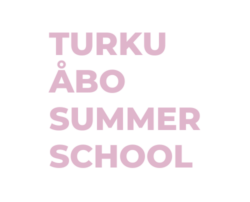From Idea to Prototype
5 ECTS | On-site in Turku | 1-30 August 2024 with contact teaching 5-16 August 2024
Are you dreaming about starting your own business? Before putting your plans into action, let’s develop fast your business idea to a prototype together. This three-day workshop implements design thinking principles according to a concept that triggers design and makes you collect feedback. Literature studies are included to create the theoretical foundation even if this course is practical.
Learning outcomes
Upon successful completion of the course, the students can explore their business idea further together with team members and other people. The students know how to design their idea and develop it further by using lean start-up methodology. The students are able to collect customer feedback and utilize customer insight in development process, create prototype, define, and refine their business idea. The students can test their ability to act according to entrepreneurial behaviour patterns.
Methods
The students will work on individual assignments and group assignments. In the three days of intensive team work-based workshops, one day is used for defining and developing each student’s idea. There will be a reading circle and the students will read the literature before coming to course.
The start of the course is completed online as we organise literature circles on start-up studies for you before doing the design thinking workshops.
Novia University of Applied Sciences
Dr Reija Anckar
Place: Mainly in Turku, but includes also online studying.
Undergraduate students with at least two years completed of Bachelor’s studies in any field.
135 h. Literature reading, literature circles, workshops.
To be chosen from following list:
- Brown, Ellis 2017. Hacking Growth.
- Kawasaki, G. (2008). The Art of the Start: The Time-Tested, Battle-Hardened Guide for Anyone Starting Anything
- Osterwalder, HBR (2013). A better way to think about your business model
- Parker, Greg 2018. How To Create a Successful, Scalable, High-Growth Business from Scratch?
- Pigneur, Y., & Clark, T. (2010). Business model generation: A handbook for visionaries, game changers, and challengers.
- Schroeder, Bernard 2015. Fail Fast or Win Big. The Start-ip Plan for Starting Now. Gildan Audio.
- Start your own business: The Only Startup Book You’ll Ever Need 2018. 7th Edition. Gildan Audio.
- Vimma, Tuomas 2018. Enkeleitä ja yksisarvisia: Startup-Suomen tarina. Otava.
- Your First Startup: The Startup Business Guide 2020. From Idea to Launch. Wayne Walker
Assessment criteria – grade 1
- Self-leadership
Student can describe own strengths, development areas and entrepreneurial vision. - Communication
Student describes his own network and recognizes for whom (stakeholders) he needs to communicate the business idea. - Offering development
Student takes the first customer contacts to test the idea and vision.
Student can describe the resources needed to implement the idea. - Team work
Contribution in the team’s work effort is active.
Assessment criteria – grade 3
- Self-leadership
Based on feedback from others, student recognizes where he needs help and can build his activities based on his own strengths. - Communication
Student identifies the communication needs related to each stakeholder. - Offering development
Student has tested and developed the idea further based on the feedback. - Team work
Good contribution in the team’s work effort, active attendance and participation.
Assessment criteria – grade 5
- Self-leadership
Based on feedback from others, student recognizes where he needs help and can build his activities based on his own strengths. - Communication
Student prepares communication materials to support the implementation of own business idea and justifies the need for those. - Offering development
Student can create a business model, explain and justify it. - Team work
Impressive contribution in the team’s work effort, active attendance, participation and gives feedback and new ideas to the other students’ work.
Max. 30 students.
